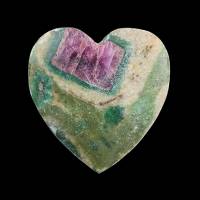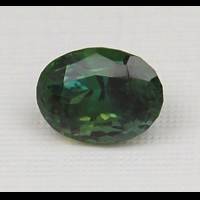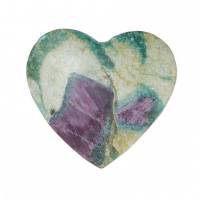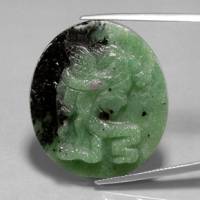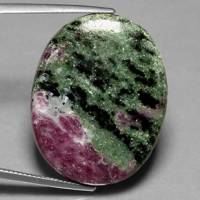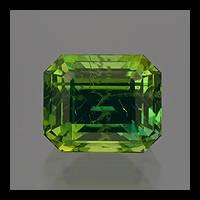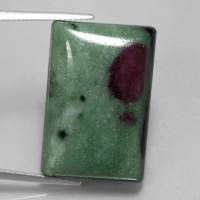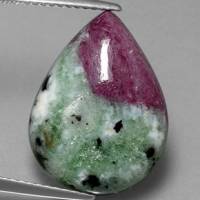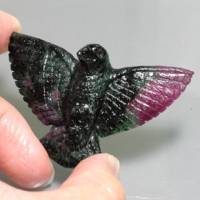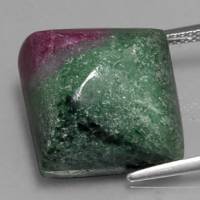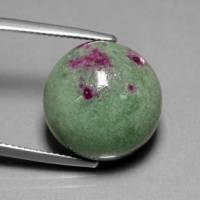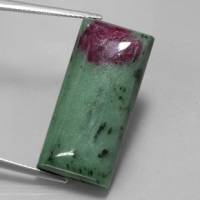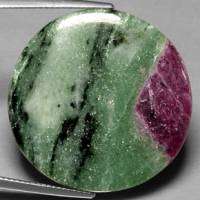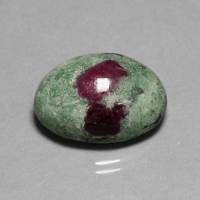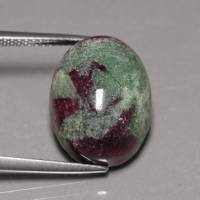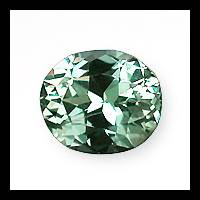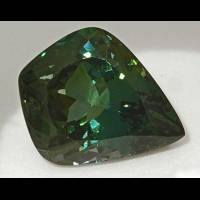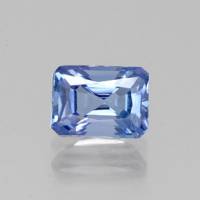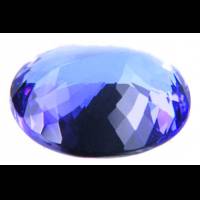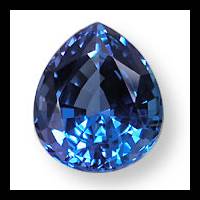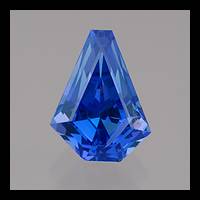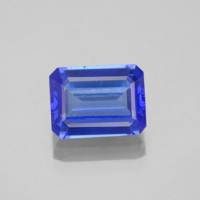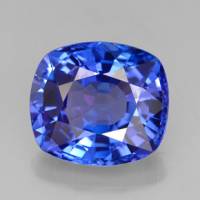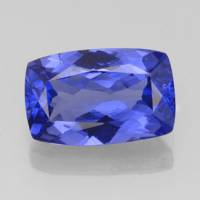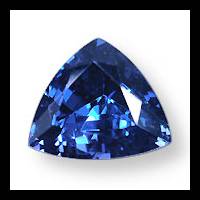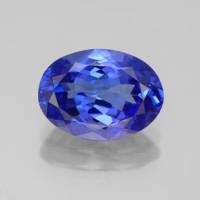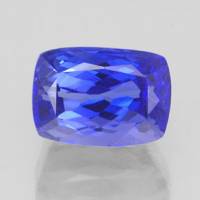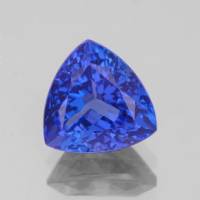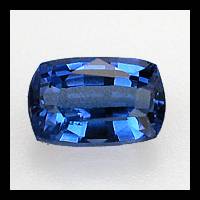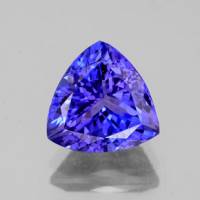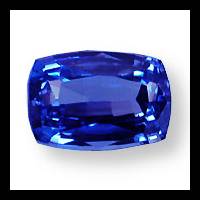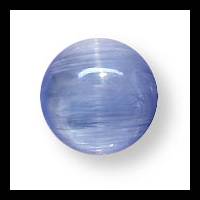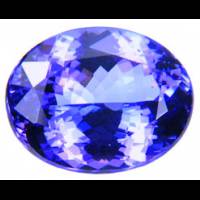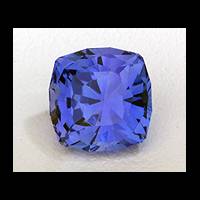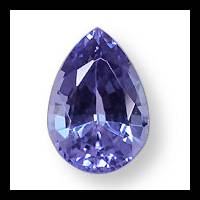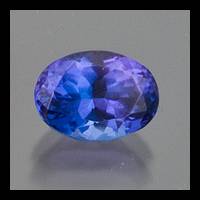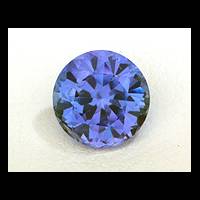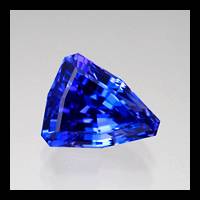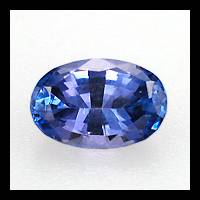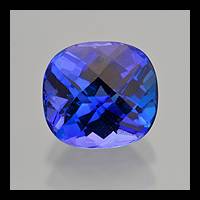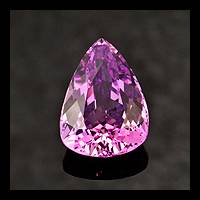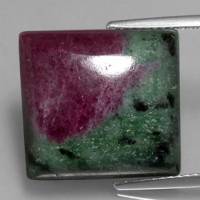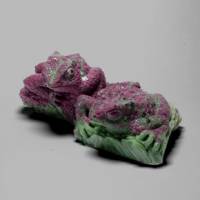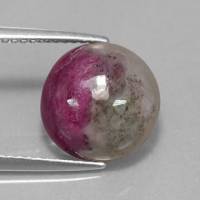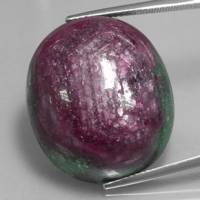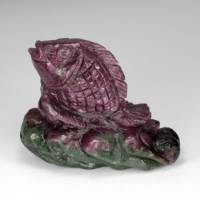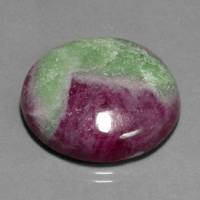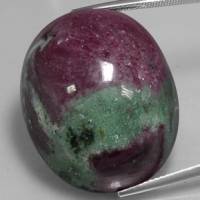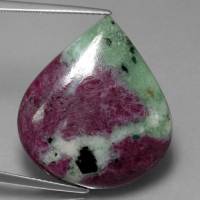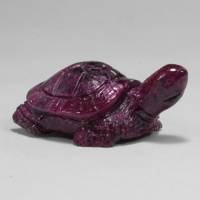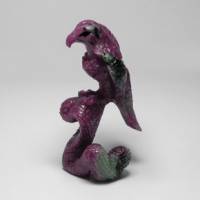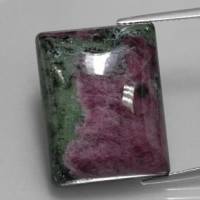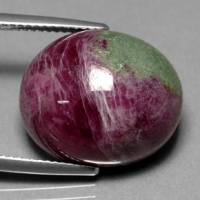Zoisite
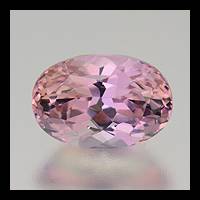
Tanzanite
Tanzania
2.53 carats
© Palagems
The gemstone members of the group are tanzanite, thulite and anyolite.
Zoisite Gemstones by Colour
This table shows the variety of hues this gemstone can be found in. Click on a photo for more information.
Zoisite Gemstones by Size
This table shows distribution of Zoisite gemstone sizes that are listed on this site. This can give a good indication as to the general availability of this gemstone in different sizes.
Contributed photos
Lightest:0.20 cts
Heaviest:1566.63 cts
Average:38.46 cts
Total photos:122
Do you have a larger Zoisite? Why not upload a photo?
| General Information | ||||||||||||||||||||||||||
|---|---|---|---|---|---|---|---|---|---|---|---|---|---|---|---|---|---|---|---|---|---|---|---|---|---|---|
| Varieties/Types: | Tanzanite - A variety of Zoisite with a blue to blue-violet colour. Thulite - A pink variety of Zoisite forming opaque masses. | |||||||||||||||||||||||||
| Chemical Formula |
| |||||||||||||||||||||||||
| Zoisite Treatments | ||||||||||||||||||||||||||
| The mineral zoisite, Ca2Al3Si3O12OH, also occurs in a gem form called tanzanite, discovered only in 1967 (Hurlbut, 1969). Although a few, deep violet-blue dichroic crystals have been found, the majority of this material occurs with a brownish color having a strong violet-red/deep blue/yellow-green trichroism. Heating for about 2 h to 370°C converts the yellow-green component into a deep blue, leaving only a violet-red/deep blue dichroism and the desired color closely resembles sapphire. Some material is said to require a temperature over 600°C. The color is stable to 900°C, but above this temperature water is lost and a dirty yellow results. The causes of the color and color change have not yet been established with certainty; Gubelin and Weibel have summarized this and the gemology (Gubelin and Weibel, 1976) - Nassau (1984) Heat-treatment of brownish-greenish-bluish crystals produces Tanzanite color - Blue Chart Gem Identification, Herve Nicolas Lazzarelli, 2010, p 3 | ||||||||||||||||||||||||||
| Physical Properties of Zoisite | ||||||||||||||||||||||||||
| Mohs Hardness | 6 to 7, Blue Chart Gem Identification (2010) More from other references | |||||||||||||||||||||||||
| Specific Gravity | 3.20 to 3.50, Blue Chart Gem Identification (2010) More from other references | |||||||||||||||||||||||||
| Cleavage Quality | Perfect, Gemmological Tables (2004) More from other references | |||||||||||||||||||||||||
| Fracture | Conchoidal, Gemstones (2009) | |||||||||||||||||||||||||
| Optical Properties of Zoisite | ||||||||||||||||||||||||||
| Refractive Index | 1.685 to 1.707, Blue Chart Gem Identification (2010) More from other references | |||||||||||||||||||||||||
| Optical Character | Biaxial/+, Blue Chart Gem Identification (2010) More from other references | |||||||||||||||||||||||||
| Birefringence | 0.006 to 0.013, Blue Chart Gem Identification (2010) More from other references | |||||||||||||||||||||||||
| Pleochroism | Strong, Gemstones (2009) | |||||||||||||||||||||||||
| Dispersion | 0.0196, Gemstones (2009) | |||||||||||||||||||||||||
| Chatoyancy | Rare, Blue Chart Gem Identification (2010) | |||||||||||||||||||||||||
| Colour | ||||||||||||||||||||||||||
| Colour (General) | Green, brown, red-violet, bluish-green, Gemmological Tables (2004) More from other references | |||||||||||||||||||||||||
| Causes of Colour | Blue, (tanzanite - heat treated), V4+ in octahedral coordination; with V3+ in octahedral coordination. Brown-violet, V3+ in octahedral coordination (treatment turns blue, tanzanite). Green, Cr3+ in octahedral coordination. Pink (thulite), Mn3+ in presumably octahedral coordination, Pragmatic Spectroscopy For Gemologists (2011) | |||||||||||||||||||||||||
| Transparency | Transparent,Translucent,Opaque, Gemmological Tables (2004) More from other references | |||||||||||||||||||||||||
| Lustre | Vitreous, Gemstones (2009) | |||||||||||||||||||||||||
| Crystallography of Zoisite | ||||||||||||||||||||||||||
| Crystal System | Orthorhombic, Blue Chart Gem Identification (2010) More from other references | |||||||||||||||||||||||||
| Habit | Prismatic, Gems, Sixth Edition (2006) More from other references | |||||||||||||||||||||||||
| Geological Environment | ||||||||||||||||||||||||||
| Where found: | Occurs in medium-grade regionally metamorphosed crystalline schists formed from igneous, sedimentary or metamorphic rocks relatively high in calcium., Gems, Sixth Edition (2006) | |||||||||||||||||||||||||
| Inclusions in Zoisite | ||||||||||||||||||||||||||
| "Fingerprint", graphite (black), hematite (hexagonal) - Blue Chart Gem Identification, Herve Nicolas Lazzarelli, 2010, p 3 Healing cracks, growth tubes, graphite - Gemmological Tables, Ulrich Henn and Claudio C. Milisenda, 2004, p 20 | ||||||||||||||||||||||||||
| Further Information | ||||||||||||||||||||||||||
| Mineral information: | Zoisite information at mindat.org | |||||||||||||||||||||||||
| Significant Gem Localities | ||||||||||||||||||||||||||
| ||||||||||||||||||||||||||

